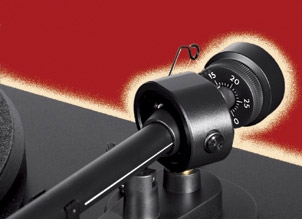Mysteries of the Turntable Explained Page 2

Speaking of tonearms: installing the cartridge into the arm might be the trickiest part of setting up a turntable. There are two basic types of mounts for connecting a cartridge to an arm: P-Mount (a.k.a. T4P) and standard half-inch. With a P-Mount, you simply plug the cartridge into the arm, and most of the critical settings will already be set correctly. The catch is that P-Mounts have fallen out of favor, and almost all arms have gone back to the old standard half-inch mount. This is much more fiddly, requiring screws, nuts, fragile wire connections, and a bunch of adjustments. But ultimately it allows for better quality arms and cartridges than could be created using the P-Mount standard. P-Mount cartridges and styluses are still available, so if you have an older turntable with this type of arm, you can pop in a fresh cartridge and be ready to play in minutes.
A couple of decades ago, it took special skill to match the cartridge to the tonearm since there were a couple of incompatible schools of thought about arm and cartridge design. Old-school companies like SME and Shure were pushing ultra-low-mass arms with high-compliance cartridges, while a new generation of low-compliance moving-coil cartridges required more massive arms to perform properly. You always want the resonant frequency of the arm-and-cartridge combination to fall below the audible frequency range, but above an area where it could be excited by tiny warps in the record. Luckily, today most arms fall into the medium-to-high effective-mass range, while cartridges are mostly medium- to low-compliance, so gross mismatches are rare. Still, you probably don't want to mount a big, heavy Audio Note IO cartridge on a spindly low-mass arm.
Picking a cartridge can be as personal of a choice as picking speakers since some cartridges can sound a bit warm and lush while others can be cool and fast. But the most important thing you need to consider is the phono input you plan to connect the turntable to. Moving-coil cartridges often have a lower output voltage than moving-magnet types, and only some phono stages are set up with the boost needed to handle this lower signal level. While there are some good high-output moving-coil cartridges that can drive a regular moving-magnet stage adequately, I prefer to use a good moving-magnet-style cartridge from a company such as Audio Technica, Ortofon, or Grado when connecting to the phono input of a typical receiver. If your system lacks any type of phono input, there are plenty of small add-on versions, many with moving-magnet and moving-coil-friendly inputs.




























































